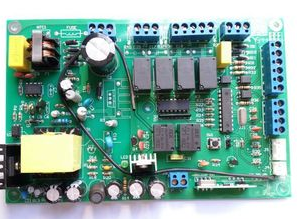The solder paste printer is at the front end of the SMT production line and prints solder paste on the PCB board pads. Therefore, the printing quality of the solder paste printer is directly related to the quality of PCB placement and reflow. The industry believes that the PCBA reflow PASS is 80 % The reason is the solder paste printing decision, so the solder paste printer printing is very important. Good printing can not only increase productivity and efficiency, but also reduce costs.
There are multiple factors that affect the printing quality of the solder paste printer. Printing parameter settings can easily cause less tin, more tin, continuous tin or even sharpening. Let me share with you the process parameter adjustment of the SMT automatic solder paste printer.
1. Printing gap of solder paste printer

The printing gap is the distance between the stencil and the PCB, which is related to the amount of solder paste remaining on the PCB after printing. As the distance increases, the amount of solder paste increases, and it is generally controlled at 0-0.05mm.
2. Printing speed
The printing speed has a great relationship with the viscosity of the solder paste. The slower the printing speed, the greater the viscosity of the solder paste: the faster the printing speed, the smaller the viscosity of the solder paste. The speed is fast, the time for the squeegee to pass through the stencil opening is relatively short, and the solder paste cannot fully penetrate into the opening, which may easily cause printing defects such as insufficient solder paste molding or missing printing.
3. Angle of scraper and stencil
The smaller the angle between the squeegee and the stencil, the greater the downward pressure, and it is easier to inject the solder paste into the mesh, but it is also easier for the solder paste to be squeezed onto the bottom surface of the stencil, causing the solder paste to stick. It is generally 45 to 60 degrees.
4. Scraper pressure
The squeegee pressure actually refers to the depth of the descent of the squeegee. If the pressure is small, the amount of solder paste that leaks into the window is small, and the amount of solder on the PCB is insufficient. Too much pressure will cause the solder paste to be printed too thin. The ideal printing speed and pressure should just scrape the solder paste from the surface of the stencil.
5. Scraper width
If the squeegee is too wide relative to the PCB, more pressure and more solder paste will be required, which will result in a waste of solder paste. Generally, the width of the squeegee is the PCB length plus 50mm, and the squeegee should be placed on the metal template.
6 Demoulding speed
After the solder paste is printed, the instant speed at which the stencil leaves the PCB is the demolding speed, which is a parameter related to the printing quality. It is the most important in fine-pitch and high-density printing. The cohesion between the paste and the pad is small, so that part of the solder paste sticks to the bottom surface of the stencil and the wall of the opening, causing printing defects such as less printing and tin collapse. When the separation speed slows down, the viscosity and cohesive force of the solder paste are large, so that the solder paste can easily break away from the stencil opening wall. Generally, the demolding speed is set to 0.3-3mm/s, and the demolding distance is generally 3mm.
7. Cleaning mode and cleaning frequency
During the printing process, the bottom of the stencil should be cleaned to remove its attachments to prevent contamination of the PCB. The cleaning usually uses absolute ethanol as a cleaning agent. The cleaning frequency set by the solder paste printer is cleaned once every 8-10 pieces of printing. Spacing, high density, higher cleaning frequency, to ensure printing quality, manually wipe with dust-free paper every 30 minutes.